Writing copy that converts is a lot like boxing.
Your shots need to flow, and you need to be 3-4 steps ahead of your opponent. You have to predict their counters, slips and movement patterns before they even think of doing them.
Similarly, to craft high-converting copy, your sentences have to flow. And you have to anticipate your reader’s objections and be mindful of each word, sentence, and paragraph that enters their brain.
Regardless of the technique you use, according to Copyblogger, the goal is “strategically delivering words to get people to take action.”
Using NLP and neurolinguistic principles, we can boost the chances that your copy will resonate with your target audience and move them to action.
Here’s how.
Table of contents
- What is neurolinguistics?
- What is neuro-linguistic programming (NLP)?
- 6 neurolinguistics and NLP principles for copywriting
- 1. Picking the right frame for stronger headlines
- 2. Disruptive reframing to increase perceived value
- 3. Stronger persuasion with presuppositions and adjacency pairs
- 4. Semantic priming to boost comprehension
- 5. The importance of rhythm and alliteration
- 6. Swing readers to the next sentence with delayed transitions
- Conclusion
What is neurolinguistics?
Neurolinguistics is the study of the neural mechanisms that control language in our brain, processing and storing our ability to speak, understand, read, and write in a language. It’s interconnected with psycholinguistics and cognitive linguistics.
What is neuro-linguistic programming (NLP)?
Neurolinguistic programming describes the dynamics between brain mechanisms (neuro) and language (linguistics), and how their relationship affects (programs) our body and behavior.
This term was coined by psychologists John Grinder and Richard Bandler. Both NLP and neurolinguistics are similar because they look at how the brain processes language, but NLP places a heavier focus on the behavioral impact of processed language.
Is NLP a bunch of BS?
You might remember NLP from Neil Strauss’s expose on ‘pick up artists’ in his book The Game, where they try to use the technique to do weird voodoo mind control stuff. At the very least, it’s pretty creepy stuff.
That’s certainly not the most credible group (or ethical use) of NLP, so it begs the question: is NLP a bunch of BS?
There’s a lot of controversy on that topic, but it seems that while some of it is based on pure pseudoscience, some of it is legit. This is a good article to read if you’d like to learn more.
Therefore this article will borrow principles from both neurolinguistics and NLP—the principles that are actually backed by a solid amount of data. They’ll help you inject more persuasive power into your copy.
6 neurolinguistics and NLP principles for copywriting
Here are 6 NLP and Neuro Linguistic principles to boost your copywriting:
1. Picking the right frame for stronger headlines
The choice of language is, of course, vital, but it is vital because language evokes frames — moral and conceptual frames.
—George Lakoff, professor of linguistics and cognitive science at UC Berkeley.
If I asked you to choose between ground beef that is 75% lean, or 25% fat; which one would you choose?
A study on framing effects and consumer choices revealed that most people picked “75% lean” despite it being the same as “25% fat”.
And in another study, participants chose from two treatments for 600 (hypothetical) disease stricken people.
When a positive frame was used (save 200 lives), 72% of people chose treatment A. However when the same treatment was negatively framed (400 people will die), that number dropped to 22%.
Framing suggests that how you present information influences the choices people make. So how can we use it to write better copy?
Framing can be used on various elements of your copy, but applying it to heavier-hitting elements like your headline give better results. For example, Michael Aagaard tested positive and negative frames for different headlines. In the first example, her was trying to boost signup numbers for bettingexpert.com:
Another test of his attempted to increase the number of accounts created on a phone dealing site:
Both tests (and other studies) lend support to writing a clear, positive/benefit-framed headline for the best performance.
However, that’s not always the case. Sometimes loss aversion works wonders.
For example, a framing study presented two groups of women videos about breast cancer and mammography with the aim of persuading them to get themselves screened: The first video was positively framed. It touted the benefits of having a mammogram.The second video was negatively framed, and stressed the risks of not having one.
The results?
51.5% of women booked a mammogram with the positively framed video. However 61.2% of women got a mammogram with the negatively framed video.
Research by Outbrain also showed that “The average click-through rate on headlines with negative superlatives was a staggering 63% higher than that of their positive counterparts.”
Clearly, both frames can be effective—so how do you decide when to use which?
As Michael’s tests reveal in his post, generally, negative/loss aversion frames convert better when something has a tangible value that prospects might be afraid of losing—Like, traffic, money and rankings etc. Here’s an example that focuses on “stealing” tangible benefits like traffic, links, content, and customers from blogger Matthew Woodward:

So what’s the right frame for you?
There’s no cut and paste answer—Sorry.
Your product, your target market’s needs and how people perceive your product play an important role. As with most things in business and marketing, you have to do the work. You have to research, collect customer insights, and ultimately do the testing to see what works best for you.
2. Disruptive reframing to increase perceived value
In NLP, the power of disruptive reframing lies in shifting or disrupting the focus of the reader/listener.
Psychologists David and Knowles made some interesting discoveries about the persuasive power of reframing. In one of their studies, they went door-to-door selling note cards for charity.
- Their first pitch stated that it was $3 for 8 cards. Resulting in 40% of households making a purchase
- The second pitch was equipped with a disruptive reframe. It asked for 300 pennies for 8 cards, and they followed up by saying, “which is a bargain”. This simple change doubled their conversions, resulting in 80% of households making a purchase.
The reframe was much more effective, but why?
In the reframe example above, routine thought process is disrupted when people hear “300 pennies.” “They expect to hear 3 dollars.
While they’re distracted by the “300 pennies”—and wondering why anyone would use that phrase—they’re told that it’s “a bargain.” And because the disruption occupies thought, it lowers resistance (for a split second anyway) and increases the chance of the prospect accepting that they’re getting a “bargain”.
This isn’t an isolated case. Numerous studies show that reframing has helped change attitudes, get people to fill out surveys, and even increased charity donations.
When it comes to writing copy, reframing is useful for reducing the weight of your price or influencing choice. Take a look at this landing page from Volkswagen for example:
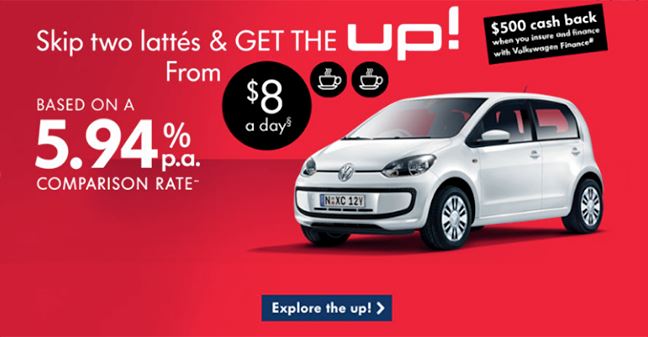
Which sounds more appealing? Paying:
- $2920 dollars a year
- $240/ month
- or just two lattes a day ($8)
By reframing the price of the car and comparing it with two lattes ($8), Volkswagen disrupts the routine thought process (latte to a car is a bit jarring). It also softens the blow of the larger price by using the contrast effect, making the offer more appealing.
This type of reframing relies on comparisons to influence thought. But another way to reframe is to use inferior options—often known as decoys.
A decoy option is a choice that is inferior to other selections. It doesn’t make sense to choose it.
So why would you anyone include it?
In The Age Of Propaganda, the author documents a study which observes the impact decoys have on choice. The study asked participants to choose between the following:
- Nutri-burger: very nutritious with average taste
- Tasti-burger: A treat for taste buds with average nutrition
- Bummer-burger: Less tastier than the other two, and average on nutrition (the decoy)
The study found decoys boosted the probability of people selecting products that were similar, but superior to the decoy, by 6.7%. So 6.7% more people chose the “Nutri-burger” just because the decoy was present.
Another study, written about in Dan Ariely’s Predictably Irrational— also showed that 62% of people selected the similar but superior choice when a decoy was present.
A live example of reframing with decoys comes from the copyhour landing page:
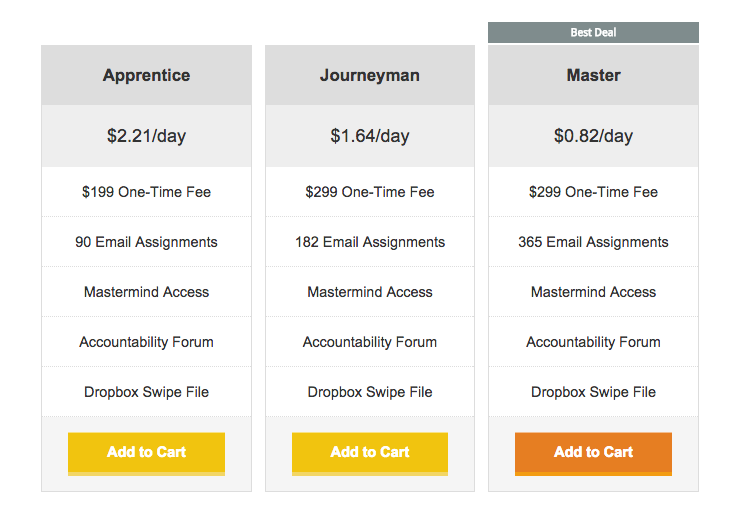
Comparing the one-time fee to its daily cost cushions the blow of the price. And a closer look shows how the “Journeyman” package serves as a decoy. Its one-time fee is the same as the master package, but it costs more per day and has less assignments.
This sets up the “Master” package as the most appealing choice.
3. Stronger persuasion with presuppositions and adjacency pairs
Presuppositions and adjacency pairs let you crank up the imaginative magnitude of your copy.
You’ve seen crime shows like CSI or NCIS, right? Then you probably remember scenes where the lead character hunches over a table and asks the interrogee; “how many times did you break the window?” or “where did you stash the dead chicken?”
Those loaded questions are known as presuppositions.
In a linguistic branch called pragmatics, a presupposition is an implied assumption necessary for completing a question, statement or thought. So, in the questions above, asking “where did you stash the dead chicken?” implies the interviewee possibly killed or hid the body of a chicken.
Presuppositions may seem like a small thing. But they’ve proven powerful enough to influence the way people remember things.
A study by Elizabeth Loftus tested the influence of presumptive questions on eyewitness testimonies.
Subjects were shown a film depicting multiple car accidents. After watching, they were asked “About how fast were the cars going when they smashed into each other?” Other subjects were then asked the same question, but with the word “smashed” replaced by:
- Contacted;
- Hit;
- Bumped;
- Collided.
The results are as follows:
The more presumptive or loaded the verb used was, the higher the estimated speed from the witness.
Furthermore, the study found when using a more presumptive question, people were more likely to state that there was broken glass at the accident…even though there was no broken glass present!
Of course, we’re not trying to distort our customer’s memory. We want to boost conversions. So how can presuppositions be used to help the reader imagine or visualize the product?
Combine presuppositions with adjacency pairs
Your words and statements are already presumptive. But to really get your reader thinking about your product/service, combine presuppositions with adjacency pairs.
In pragmatics, an adjacency pair is when the second part of the sentence or the conversation is functionally dependant on the first part. To answer or complete the conversation or thought, you have to answer or understand the first part.
Basically, this means that to make sense of what is being said, your brain has to—momentarily—accept the first part as a fact.
So imagine I were to ask you this? “How will you use the neuro linguistic principles in this article to strengthen your copy?”
To answer the question, you have to accept the initial presupposition that you’ll use neuro linguistic principles, and that you’ll read the article.
Here’s an example of this in use for an online coaching program:
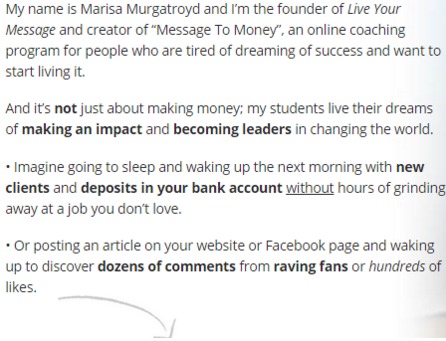
When the reader is told to imagine, in order for him to complete the sentence or thought, he has to comply. He has to “play along” and visualize himself with new clients and money in the bank account.
This inspires a subtle form of persuasion called “self selling.”
In a study by Robert Cialdini and Larry Gregory, a salesperson went door to door selling subscriptions to cable television.
- The first sales pitch focused on the advantages of cable TV. Prospects were told that “it is cheaper and less hassle than going to a movie; you can spend more time with your family.”
- The second pitch told prospects to…“take a moment and imagine how cable television will provide you with broader entertainment.”
When pitched the advantages of TV, 19.5% of people subscribed. However, after asking people to imagine the advantages, 47.4% of people subscribed.
The reason? Self-generated persuasion. Basically using presumptive adjacency pairs can help people to sell themselves. There’s a reason Frank Luntz calls “imagine” the most persuasive word in the English language.
4. Semantic priming to boost comprehension
We already know there’s a ton of subtle psychology behind everyday advertising and marketing. But did you know that psychology even bleeds into shopping at your local supermarket? And no, I’m not talking about product packaging or positioning.
I’m talking about something much more subtle: background music.

Researchers at the University of Leicester found that playing different types of music lead to different types of purchases of wine.
For two weeks the store alternated daily between German music and French music. The results? French music lead to French wines outselling German ones. Whereas German music lead to more German wine sales than French.
The reason for this? Priming.
Priming means to provide a stimulus that guides short-term future thoughts and actions. It introduces something new, or causes older thoughts/memories to resurface to the subconscious.
It’s also a powerful tool in the world of magic. A study by a psychiatry student Jay Olson, shed some light on how priming is used to influence future actions.
While flicking through a deck of cards, Olson would ask subjects to randomly pick one. What subjects didn’t know was that he already determined the card they’d pick. To influence selections, he would let his finger linger on a specific card for just a little longer. This is theorized to subconsciously prime the subject to pick that specific card later.
It helped Olson accurately steer the choices of 103 out of 105 participants. Further questioning also revealed that over 90% of volunteers were convinced that their choice was entirely their own.
To get results with priming, it’s important to have built solid customer personas—To know your customers’ language, to know what words scare them away, and what connotations specific words sprout in their minds with regards to your product.
5. The importance of rhythm and alliteration
Rhythm and alliteration may feel too poetic to some writers, but they do have a place in writing effective copy that sticks.
A study that conducted experiments on poetic devices (like alliteration and resonance), found that it didn’t matter if words were read aloud or silently; alliterative cues and rhythm enhance memory.
When crafting short copy—like taglines, headlines and subheads—rhythm can help make your copy more memorable and familiar to your prospect. For example, take a look at the brand names below:
- Coca-cola
- PayPal
- BlackBerry
- Dunkin Donuts
Even though they are all popular brand names… alliteration makes them easier to say, recognize, and remember.
Apple also uses alliteration in their copy:
So why does rhyme work?
Psychologist Matthew McGlone, Ph.D., conducted a study which asked subjects to rate the accuracy of rhyming, and non-rhyming statements. He found that rhyming statements were thought of as more accurate than non-rhyming ones.
In addition, he found that that rhyme can even influence people to favor a statement they would otherwise disagree with. When asked if financial success lead to health, most of McGlone’s subjects disagreed. But “wealth makes health” seemed more truthful and agreeable.
This is because of the rhyme as reason effect. It’s closely linked to cognitive fluency, which states the easier something is to understand or do, the more profitable, pleasurable, and safer it is perceived to be.
Here’s an example of rhythm in copy from online travel agent Jacada Incentives:

You don’t need to be the world’s best copywriter to write copy that works. But including rhythmic devices in your copy can help make your brand and your message more memorable.
6. Swing readers to the next sentence with delayed transitions
In linguistics, cohesion refers to how the meaning and flow of a piece of text is held together.
There are two main types of cohesion:
- Grammatical cohesion deals with the structure and flow of a text.
- Lexical cohesion on the other hand, delves into lexical content and background knowledge to add meaning and clarity.
Both are important when it comes to writing copy. But we’re going to look at grammatical cohesion—specifically at how sentences can become more cohesive by using delayed transitions.
According to Yellowlees Douglas, professor of communication at the University of Florida, “Transitions are your readers’ linguistic lifelines that link sentences and ideas smoothly together, making your reading easy to understand and recall.”
A transition is like a literary tube. It uses certain words or phrases to connect ideas and sentences. The sentence below is an example…
You want to boost your conversions without spending an arm and a leg, so you work on tweaking your copy.
It uses the word “so” as a transition.
A delayed transition on the other hand, is slightly different to a normal transition. Because the connecting phrase, or word, is placed at the beginning of the next sentence or paragraph.
In the sentence below, the delayed transitions “and”, “but”, and “so” help create a cohesive sentence that hand-holds the reader from one thought, to the next.
You know that strong copy is essential for healthy conversions. And you know that writing writing strong copy isn’t easy. So you’ve come to this post to learn more.
See how Apple uses delayed transitions to smoothly move you from one sentence to the next? There’s a reason for that.
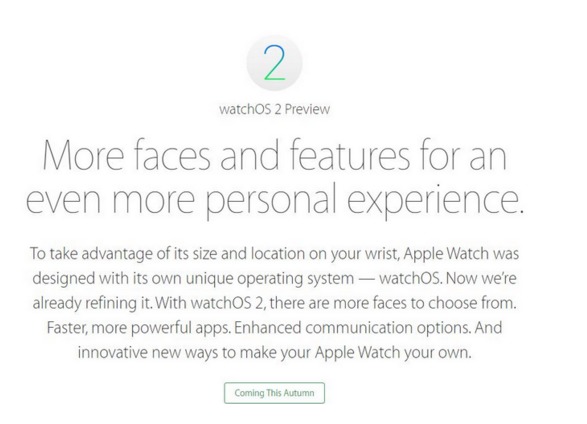
Delayed transitions strengthen your copy because:
- They make it easier to start the next thought process
- They help make your copy less predictable, which maintains interest
- They allow for shorter sentences. Which helps you build momentum and keep your copy moving at a fast pace.
Ask yourself, are you expressing one thought per sentence, and one main point per paragraph?
If not, use transitions to trim your sentence fat and make your copy more digestible.
Conclusion
Copywriting is often described as a sweet science and powerful art.
Today’s post we looked deep into how neurolinguistics can be used to power up copy. To summarize, here are the 6 Neuro Linguistics principles we covered:
- Framing For Stronger Headlines;
- Disruptive Reframing To Increase Value;
- Presuppositions And Adjacency Pairs For Stronger Persuasion;
- Semantic Priming For Clearer Comprehension;
- Rhythm And Alliteration For Mentally Sticky Copy;
- Delayed Transition To Swing Readers To The Next Sentence.
While these principles are a good starting point, the only way to know what copy works best is to continually test.



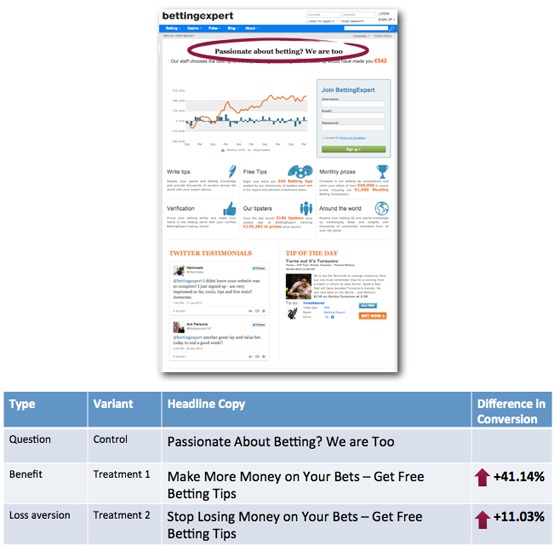
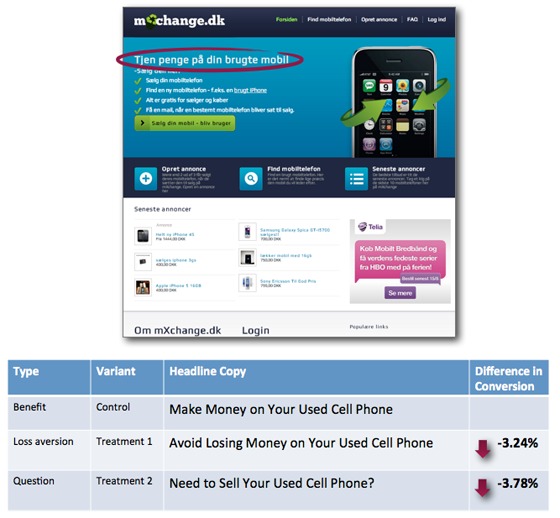

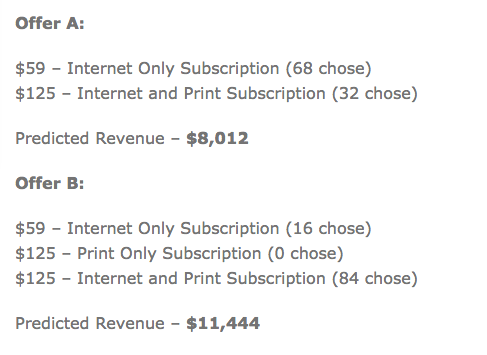


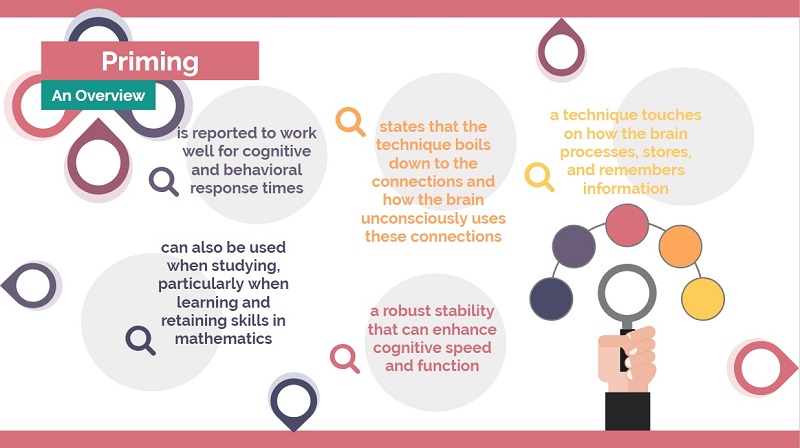





Dear Hassan
Incredible! I love your subject, and how you validate it visually, and make such a complex topic relevant to many levels of understanding. You re giving away so much content, REAL content too… I had to write you and find out how to collaborate with your organization.
I sell Oceanfront Real Estate in Boca Raton FL and in the 90’s closed about 20M in timeshare sales for Hilton, Vistana, and Embassy Suites , so was very geared to closing unexpected high end product that had a 10 day right to cancel.
NLP was why I could do it, as was social style presentations.
And of course, my naturally attractive personality… :)
I want to dive deeper into what you know… and re read this article at least twice.
I think my bosses would want to know your material as well.
Do you teach it in person?
Let me know, how we can collaborate. I believe in what you are trying to convey
Best regards
Christian Bittman
Lic FL RE Broker
PS.
I just got refunds back from the Date with Dest. of Destinay ( TR)
He’s sold his soul. The only think I did n’t see at that convention was
TR embossed underwear. a Wolf leading sheep… AND FLEECING THEM
Your article above provides 10x what aN ENTIRE day at his convention offers.
Can’t wait to collaborate…
Christian Bittman